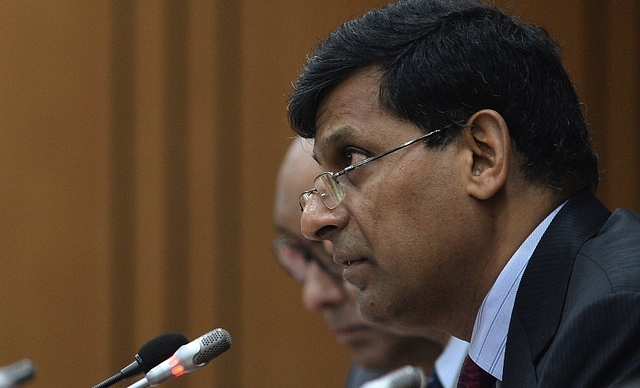
Why India Inc Should Kiss Goodbye To Hopes Of Big Interest Rate Cuts in 2016
On 2 February, Raghuram Rajan will be announcing the Reserve Bank’s next bi-monthly monetary policy. Don’t hold your breath for good news. If India Inc is hoping for another interest rate cut, it is likely to be disappointed. Rajan is unlikely to oblige as he has no reason to.
There are several reasons for this, and only one of them is the renewed fear of a rise in retail inflation, which went up from 5.4 percent to 5.6 percent in December 2015. This is only a hop-step-and-jump away from the target of 6 percent in January 2016, and hardly leaves the Reserve Bank with elbow room to experiment with a further frontloading of rate cuts to boost growth.
However, there is a bigger reason why rates cannot be cut too soon: the supply of loans is likely to be higher than the demand for it. And we are not only talking corporate borrowers here, but sovereign ones – centre and states. Banks and foreign and domestic funds, which have to invest in high-quality debt, are likely to demand higher rates to buy the debt overload on offer.
Consider the situation as of now.
The central government, faced with huge payouts for implementing one-rank-one-pension (OROP) for the armed forces, and the Seventh Pay Commission award, is likely to ease up on the fiscal deficit in Budget 2016-17. A higher fiscal deficit means a higher net borrowing requirement from the markets.
But the state government could be big borrowers too, according to an analysis by Soumya Kanti Ghosh and Ramkamal Samanta in Mint newspaper. Apart from the higher central fiscal deficit, the big change next year will be the state government bonds issued to clear discom debts. Ghosh and Samanta predict that in FY2017 (ie, next financial year), discom bonds will be of the order of Rs 1,05,000 crore – and overall government borrowings (centre, states, and discom bonds) will be around Rs 45,000 crore above the anticipated total this year.
On the other hand, the supply of money – which basically means banks, mutual funds and foreign investors – is uncertain. Banks, usually the biggest buyers of sovereign bonds, are finding that credit growth is beginning to outstrip deposit growth, with the latest figures released by the central bank showing a year-on-year credit growth of 11.3 percent against deposit growth of 10.9 percent.
With government planning another bumper round of spectrum sales in 2016-17, the corporate demand for bank funds will also be higher, unless the stock market provides some relief by allowing more equity raisings.
Thanks to this scenario, 10-year government bond yields are sticky at around 7.8 percent, though they were supposed to start weakening. Say Ghosh and Samanta: “Given the market dynamics of supply far outstripping demand, we may witness bear steepening of the yield curve, with steepening in the medium (10-15-year duration segment) and upper end (above 15-year segment) of the curve due to excess supply of medium and long-term paper relative to demand.”
With credit growth already looking higher than deposit growth, banks – which have been cutting deposit rates to maintain spreads and cover bad loans – have to raise deposit rates to invest more in sovereign bonds. But that means rates have to stay up longer than before.
Against this backdrop, to expect Rajan to be oozing generosity on interest rates is a bit much. The only reason to do it would be to prove the pundits wrong.
The best guess for 2016 would be to expect very few rate cuts, whether now or even later this year.